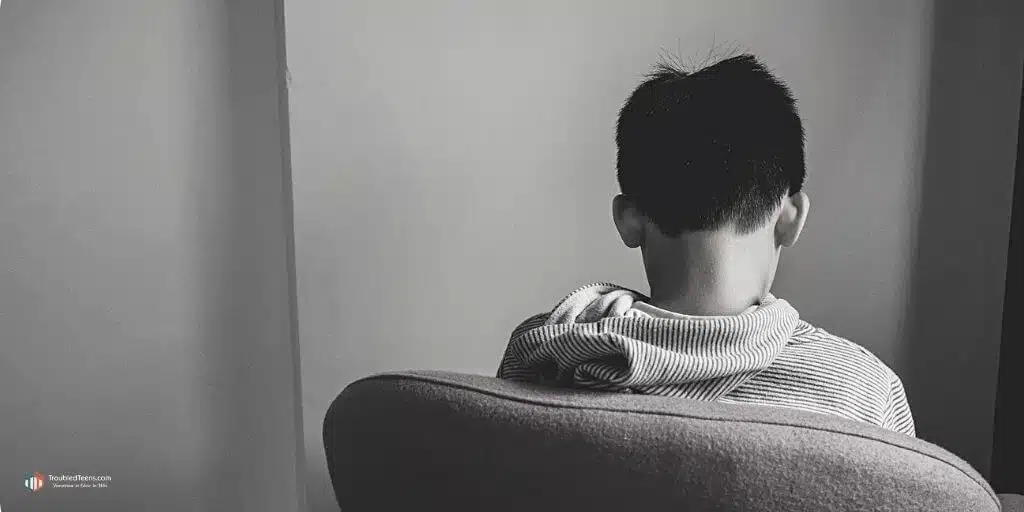Updated on October 29, 2024
Have you been told by a teacher or other professional that your teen may have a mental health disorder or a behavioral disorder? If you felt distraught and confused upon hearing this, you are not alone.
Every year, over a million teens in the U.S. are formally diagnosed with a behavioral disorder or a mental health disorder. As a parent who has just been told their child should seek psychological help, it is understandable that you don’t know what to do next.
Many parents aren’t sure what kind of therapy their teen needs because the difference between a behavioral disorder and a mental health disorder seems ambiguous.
Knowing everything there is to know about these two disorders can help parents find the right kind of treatment for their teens. You can then feel more assured that you have made the right decision in addressing your child’s mental or behavioral problem.
Every year, over a million teens in the U.S. are formally diagnosed with a behavioral disorder or a mental health disorder.
What is a Behavioral Disorder?
Behavioral disorders can affect children, adolescents, and adults. When someone has a behavioral disorder, it is their behavior that severely disrupts their lives and the lives of those close to them. Although the impulsive actions of teens with behavioral disorders appear irrational and often self-destructive, there are complex psychological and biological reasons fueling that behavior.
Although teens with a behavioral disorder commonly have co-occurring problems like depression or generalized anxiety disorder, it is predominantly their behavior that causes mental health issues. The Diagnostic and Statistical Manual of Mental Disorders (DSM-5) currently lists the following behavioral disorders:
- Conduct Disorder
- Disruptive Mood Dysregulation Disorder
- Oppositional Defiant Disorder
- Intermittent Explosive Disorder
- Attention-Deficit Hyperactive Disorder
For a psychologist to diagnose a teen with a behavioral disorder, symptoms should continue for at least six months. In addition, the behavioral disorder must be causing serious problems for the teen at home and at school.
Eating disorders (anorexia nervosa, bulimia, binging and purging), gambling addiction, substance abuse, obsessive-compulsive disorder (OCD), trichotillomania (hair-pulling), self-injury, and some personality disorders may be considered as behavioral disorders when they are not accompanied by a severe mental illness like schizophrenia or other psychotic disorder.
What is a Mental Health Disorder?
Teens with a mental health disorder do not always present negative behaviors. For example, a teenager with major depressive disorder is more likely to socially isolate themselves and spend hours alone in their room. Depressed teens have no interest in doing things they used to enjoy doing. They often sleep more than 10 hours a day, neglect to finish homework, and respond apathetically to positive events.
Although teens with a behavioral disorder do have mental health issues, it is their observable and disruptive actions that differentiate a mental illness from a behavioral disorder. A clear illustration of a teen with a behavioral disorder in contrast to a teen with a mental health disorder could involve 15-year-old Roger, who has been diagnosed with conduct disorder, and 16-year-old Makayla, who has been diagnosed with depressive-type schizo-affective disorder (a mental illness).
Roger’s Behavioral Disorder

Makayla’s Mental Health Disorder
Makayla fell into a deep depression after her best friend died in a car accident. Antidepressants and counseling did not seem to be helping Makayla cope with the loss. She rarely left her room and missed a lot of school due to psychosomatic complaints. Most of her time was spent writing in a journal and staring out her bedroom window.
One day, Makayla firmly told her mother that she knew her best friend was still alive because of the way the leaves on the tree outside her window moved when it was windy. Makayla also said she believed she would sell the poems she had been writing for millions of dollars and that she would use that money to find where her best friend was hiding.
Is Bipolar Disorder a Mental Health or Behavioral Disorder?
Previously considered a disorder that mostly affects young adults, bipolar disorder (BD) is now thought to be as common among teens as among young adults. The National Institutes of Mental Health (NIMH) recently published a study that found one out of every 100 teens between 14 and 18 years old met the criteria for a diagnosis of bipolar disorder. The study also found that 20 percent of teens with major depressive disorder will likely develop BD within five years of initially experiencing depression.
Psychiatrists also think bipolar disorder among teens is significantly underdiagnosed. The NIMH study further suggests that one-third of teens with depression may actually have symptoms of early-onset BD.
Bipolar disorder is a mental health disorder involving cycles of intense mania and depression. During manic phases, teens may talk rapidly and without making much sense, sleep only a few hours every day, and have grandiose beliefs about their physical or mental abilities. Depressive episodes are characterized by lethargy, loss of appetite, crying for no reason, and feeling hopeless, sad, and self-loathing.
Are Mood Disorders a Behavioral Disorder or a Mental Health Disorder?
Mood (affective) disorders are a constellation of mental health issues that include:
- Major depression: persistent feelings of sadness, hopelessness, and suicide ideation that continue daily for at least six months
- Dysthymia (persistent depressive disorder): chronic depression that lasts for at least two years and affects the teen nearly every day. Symptoms of dysthymia are less severe than symptoms of major depression.
- Disruptive mood dysregulation disorder: symptoms of DMDD usually begin before the age of 10. However, teens over 18 and children under six are not typically diagnosed specifically with DMDD. Symptoms include daily irritability, angry mood, frequent explosions of temper, and difficulty functioning at school and home.
Some teens are more at risk of having mood disorders, especially if a parent has a mood disorder or the teen recently experienced an upsetting event. Watching parents get divorced, the death of a close family member, family financial issues, or being evicted are occurrences that can provoke a mood disorder in a vulnerable teen.
Why Is Substance Abuse Considered a Behavioral Disorder?
A drug or alcohol addict engages in what psychologists call “drug-seeking” behaviors. The actions taken by a substance abuser are meant to achieve one goal: obtain their drug of choice to get high. Examples of drug-seeking behaviors by teens include:
- Lying about why they need money
- Lying about why they need a ride to a “friend’s” house
- Manipulating anyone (especially enablers) who they think will be useful in obtaining drugs or alcohol
- Stealing money from family members or committing breaking and entering to steal money or valuables
- Driving while under the influence to obtain drugs
- Threatening a family member if that person doesn’t give them the money or ride they need to get drugs
Like gambling, sex, and Internet addiction, substance addiction is sustained and worsened by the behaviors of the person addicted. When teens with drug addictions are evaluated prior to beginning treatment, they are always found to have a co-occurring mental health problem.
Treatment for Mental Health and Behavioral Disorders
Some mood disorders and depression types may be treated successfully with outpatient counseling and medication. Teens with behavioral disorders and serious mental illness would do best by entering a residential treatment center that provides therapy, group and individual counseling, and a structured environment 24/7.
For more information on getting your child the help they need, please speak to one of our family advisors today.
About Residential Treatment Centers
The well-rounded and structured approach of residential treatment facilities helps keep teens on track and engaged in their treatment program until they are ready for more responsibility. This 24/7 support system is vital for adolescents as they work through difficult issues and make progress towards independence.




















